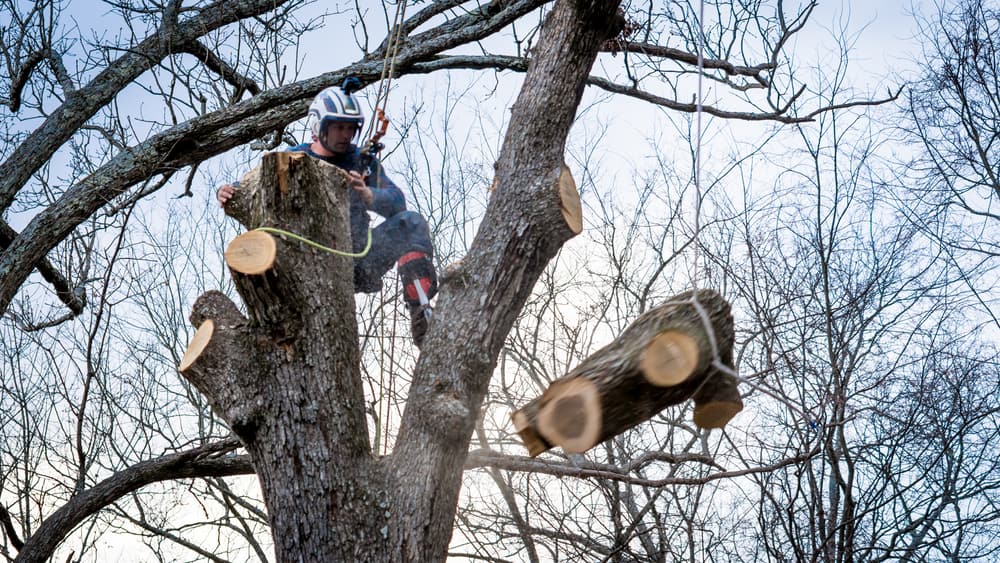Contact an arborist if your tree is exhibiting these symptoms, say Pennsylvania-based tree service professionals.
Arborists Have the Know-How to Save Your Trees
Trees in distress can cause damage to homes and property due to dying branches or even complete collapse. If a homeowner pays attention to the signs that their tree needs help, they can contact a tree service company before the issue becomes a serious emergency. Starting at the roots, this article will detail the ways a tree tells you to call the doctor.
1. Root Damage
Damage to a tree’s roots can happen for a variety of reasons including human interference such as digging for a home renovation. Pests and other natural occurrences may also be responsible for the damage. Since roots carry water and soil nutrients to the upper branches, damaged roots can inhibit growth and may even cause part of the tree to die off from lack of nutrition. If an arborist is called in time, they may be able to save the tree.
2. Roots in Pipes
Roots are always searching for easy access to water. Weak or corroded pipes may provide the perfect opportunity for roots to infiltrate pipes and absorb the water and nutrients they contain. The problem is this causes slow draining, clogs, and similar plumbing issues. Calling an arborist can keep both the tree and the pipes safe from destruction.
3. A Leaning Tree
If a tree is tilted in a way it wasn’t before, this is definitely a problem for the roots. This leaning can be the result of root damage, soil oversaturation(flooding or overwatering), storm wind damage, or erosion. If the tree is not supported it may continue its slow descent to the ground. An arborist can determine the best way to get the tree back on its roots and has the proper equipment to do it.
4. Lack of Leaves
When spring comes, trees tend to sprout their leaves at slightly different times, but if a tree is well into a growing season and leaves are just not appearing or are sparse in number, there is likely an issue with the tree. Malformed leaves are also a sign that there may be tree disease or pest infestation. Discoloration on leaves may also indicate this.
5. Overcrowded Branches
When branches grow too thick and close together, they can actually cause damage to each other. When bark is rubbed off a branch and the inner wood is exposed, this not only makes it difficult for the limb to receive nourishment, but it also leaves it open for attack by pests and disease. This leads directly into the next symptom, dead or dying branches.
6. Dead Branches
This is often the result of branches that have grown too close or from a tree that has outgrown its system of nutrition. It also may be the result of a treatable infestation or disease. A certified arborist can decide if tree pruning is the best option or if other actions should be included in the treatment plan.
7. Overgrown Crown
Sometimes trees just grow too big. The crown, or the top part of the tree, may be reaching too far and causing problems with the yard, house or municipal power lines. While the tree may not have to be completely removed, tree trimming is definitely needed and should be done by a trained professional. A DIYer may over-trim and kill the tree.
About Greater Pitt Tree Service
With over 28 years of experience, the award-winning Greater Pitt Tree Service is available 24/7 for emergency tree removal. Same-day estimates and tree risk assessments are available throughout the greater Pittsburgh, PA area. Call us today for a free quote.

